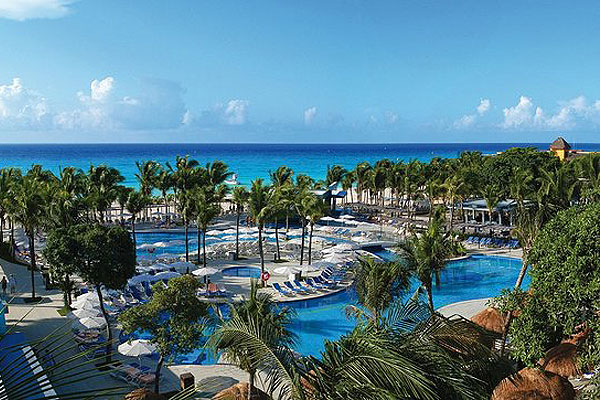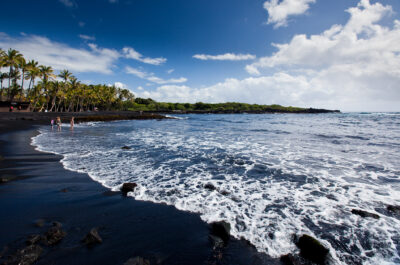
Hotel Riu Yucatan.
Bogota records highest occupancy level since 2013; Rio de Janeiro sees strong performance amid post-Olympics recovery.
LONDON – Hotels in the Central/South America region reported positive performance results during 2019, according to data from STR.
U.S. dollar constant currency, 2019 vs. 2018
Central/South America
- Occupancy: +1.2% to 58.8%
- Average daily rate (ADR): +8.0% to US$96.25
- Revenue per available room (RevPAR): +9.3% to US$56.55
Note: Venezuela data was not included in this sample due to currency fluctuations in the country drastically affecting hotel performance figures for all of South America.
Local currency, 2019 vs. 2018
Bogota, Colombia
- Occupancy: +0.6% to 58.0%
- ADR: +5.1 to COP273,710.46
- RevPAR: +5.7% to COP158,828.02
While occupancy only grew slightly, the absolute level was the highest for any year in Bogota since 2013. In July, the market’s performance was boosted by AgroExpo (11-21 July). In October, however, monthly occupancy dropped after five consecutive months of growth, and the steepest drop came the day before the market hosted local and regional elections for the first time since 2016 (26 October).
Rio de Janeiro
- Occupancy: +16.4% to 60.2%
- ADR: +9.2% to BRL395.38
- RevPAR: +27.1% to BRL238.19
STR analysts note that Rio de Janeiro hotels are recovering from lower levels of performance in the time that followed the 2016 Summer Olympics. A number of international events also helped boost performance throughout the year such, as Copa America (14 June through 7 July) and the 11th World Chambers Congress (12-14 June), a biennial event which was last hosted in Sydney. Overall, demand for the year grew 14.4%.
Canada 2019 hotel performance
The Canadian hotel industry reported mostly negative year-over-year results in the three key performance metrics during 2019, according to data from STR.
Compared with 2018:
- Occupancy: -1.3% to 65.2%
- Average daily rate (ADR): +1.2% to CAD165.23
- Revenue per available room (RevPAR): -0.2% to CAD107.81
The absolute ADR level was the highest for any year in STR’s Canada database, while the absolute RevPAR level was the second-highest on record behind 2018 (CAD108.00).
An October report from Destination Canada showed that overnight arrivals of international visitors to the country surpassed 1.6 million for the first time ever for that month, bringing year-to-date visitors to a record high of 19.6 million (+5.0%). STR analysts note that despite that exponential growth, hotel demand (+0.1%) lagged behind supply (+1.5%), which brought occupancy down. With occupancy levels declining and economic growth slowing, hoteliers experienced less pricing power compared with 2018.
- In absolute values, August was Canada’s top month of the year for each of the three metrics: occupancy (79.0%), ADR (CAD185.08) and RevPAR (CAD146.21).
- Among the provinces and territories, British Columbia recorded the largest year-over-year increase in RevPAR (+2.6% to CAD138.50), due primarily to the largest lift in ADR (+2.6% to CAD197.40).
- Newfoundland and Labrador experienced the highest rise in occupancy (+1.7% to 54.5%) but the steepest declines in ADR (-5.5% to CAD132.22) and RevPAR (-4.0% to CAD72.12).
Mexico 2019 hotel performance
Mexico’s hotel industry reported negative performance results during 2019, according to data from STR.
Compared with 2018:
- Occupancy: -2.6% to 61.3%
- Average daily rate (ADR): -2.6% to MXN2,204.78
- Revenue per available room (RevPAR): -5.1% to MXN1,351.58
While not far from the long-term historical average in the country, STR analysts note that the absolute occupancy was the lowest for Mexico since 2013. The drop in occupancy came as a result of healthy supply growth (+3.1%) and softened demand (+0.5%) that was likely influenced by safety concerns that led to U.S.-issued travel advisories, excessive seaweed in the Mexican Caribbean and the dissolution of the government-run tourism organization. Despite the lower demand growth, 2019 was the 10th consecutive year of an increase in the metric. Economic factors are showing reasons for optimism in 2020, however, which could point to higher demand.
Among STR’s defined markets for the country, Mexico Central North experienced the largest decrease in occupancy (-5.1% to 57.9%). Based on number of hotels, the largest cities included in this market are Guadalajara and Puerto Vallarta.
The Yucatan Peninsula registered the only double-digit decline in RevPAR (-11.5% to MXN2,208.23), due primarily to the steepest drop in ADR (-9.9% to MXN3,202.85).
Mexico City posted the only other decrease in ADR (-1.8% to MXN2.249.97), which resulted in the second-largest drop in RevPAR (-4.4% to MXN1,480.53).
Mexico Central South saw the only rise in occupancy (+2.3% to 52.8%) and the highest jump in RevPAR (+4.3% to MXN608.48). The highest hotel counts in this market belong to Oaxaca and Acapulco.
Mexico Northwest reported the largest lift in ADR (+3.9% to MXN2,832.07), which drove the only other increase in RevPAR (+0.8% to MXN1,621.70). The largest cities included in this market are Monterrey, Saltillo and Tampico.
Caribbean 2019 hotel performance
The Caribbean hotel industry reported lower occupancy but record-breaking average daily rate (ADR) and revenue per available room (RevPAR) during 2019, according to data from STR.
Compared with 2018:
- Occupancy: -2.7% to 63.7%
- ADR: +5.6% to US$218.82
- RevPAR: +2.8% to US$139.45
The absolute occupancy level was the lowest in the Caribbean since 2011, but the ADR and RevPAR values were the highest for any year on record in the region.
“Despite six straight months of RevPAR declines between June and November, Caribbean hotels were able to reach a slight increase in December to end the year on a positive note,” said Rico Louw, STR’s client account manager. “The decline in performance during those earlier months was likely due to the effects of Hurricane Dorian and the negative perception impact that followed, as well as continued supply growth in the region. Hoteliers have been able to maintain rates despite an abundance of new supply and muted demand.”
In absolute values, March was the Caribbean’s top-performing month for each of the three key performance metrics: occupancy (75.0%), ADR (US$276.08) and RevPAR (US$207.13). February and January were the highest RevPAR growth months at +10.6% and +10.4%, respectively.
September was the lowest month of the year for occupancy (47.1%), ADR (US$148.53) and RevPAR (US$70.01) as well as the worst month for RevPAR comparisons (-6.2%).
When looking at individual islands, Turks & Caicos Islands experienced the highest rise in occupancy (+4.3% to 62.7%) and RevPAR (+12.8% to US$653.75).
The Cayman Islands posted the largest lift in ADR (+8.3% to US$466.06).
Dominican Republic saw the steepest declines in each of the three key performance metrics: occupancy (-8.0% to 67.7%), ADR (-3.5% to US$136.10) and RevPAR (-11.2% to US$92.12). Performance levels were pressured by supply growth (+2.6%) in addition to lost demand (-5.6%), and the island continues to lead the region in construction activity with 5,403 rooms being built.
Overall, there are 13,033 rooms in construction in the region.
Tatiana is the news coordinator for TravelDailyNews Media Network (traveldailynews.gr, traveldailynews.com and traveldailynews.asia). Her role includes monitoring the hundreds of news sources of TravelDailyNews Media Network and skimming the most important according to our strategy.
She holds a Bachelor's degree in Communication & Mass Media from Panteion University of Political & Social Studies of Athens and she has been editor and editor-in-chief in various economic magazines and newspapers.
































































































































































































































